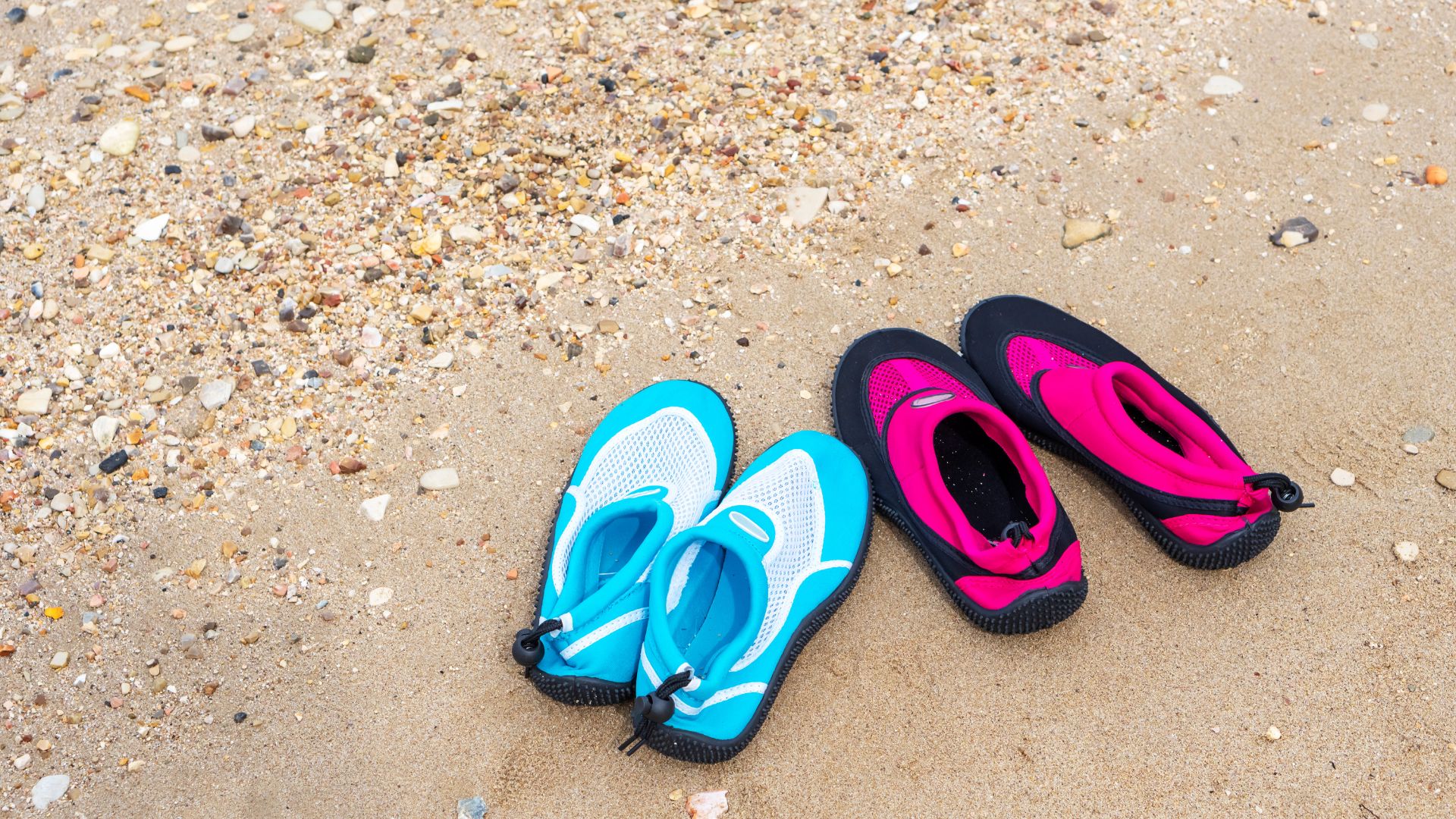I’d always heard wild stories about Matala Beach and those mysterious caves hacked into the sandstone cliffs of southern Crete. I got curious—maybe a little obsessed—wondering if the legends could actually live up to the hype, so I finally decided to go see where all those 1960s hippies camped out by the sea.
Matala draws people in with its hand-carved cliffside caves and laid-back vibe. Its fascinating history and that golden, sandy beach? Hard to resist.
Standing on the soft red sand, I could almost hear the echoes of music and laughter from the wild, free-spirited crowd that once called this place home. The caves are open for anyone to explore, letting you step right into the world that inspired artists like Joni Mitchell and wanderers from everywhere.
Walking through Matala’s odd, beautiful landscape, I felt like I’d slipped back in time—straight into the heart of Crete’s most legendary beach.
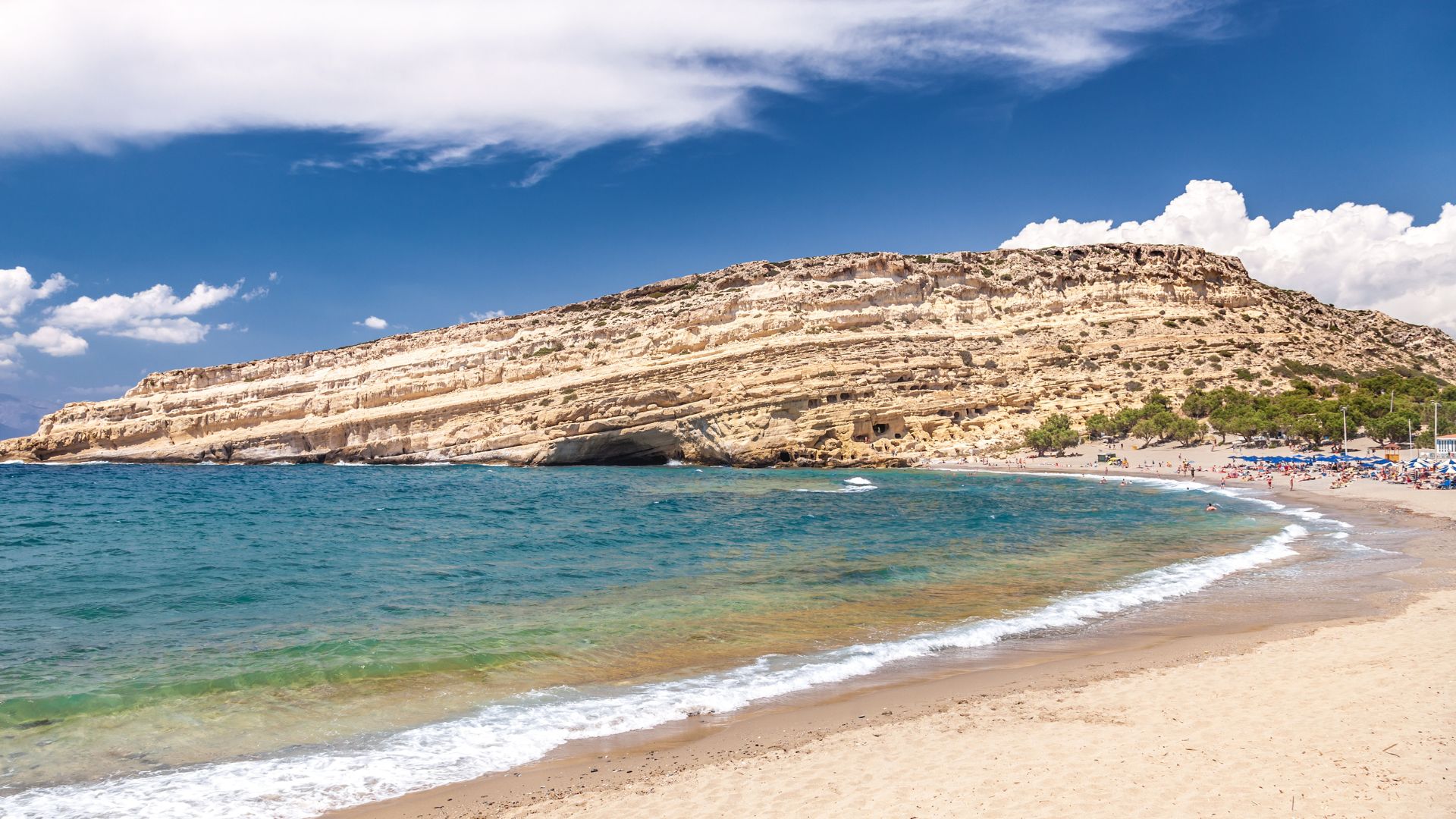
Discovering Matala: Where Crete’s Bohemian Spirit Lives On
Matala just stands out. There’s this mix of natural beauty and a quirky, unique history that you feel right away.
Sandstone caves line the cliffs above the beach. The relaxed village vibe pulls in travelers who want sunshine, sea, and maybe a little of that old 1960s counterculture energy.
First Impressions of Matala Beach
What hit me first? The wild contrast—golden sand under my feet, clear turquoise water ahead, and those massive cliffs, all pockmarked with mysterious cave openings just steps away.
Locals and visitors lounged in the sun, and the air felt warm and salty. Small fishing boats rocked gently in the harbor.
Street art and bright murals splashed color across the stone walls, giving the village an artsy, lived-in feel.
The beach buzzed with activity but never felt crowded. I always found a quiet spot or struck up a conversation at a taverna nearby.
Shops showed off handmade jewelry and painted shells. Music drifted everywhere—from live bands or a lone guitar by the caves.
There’s just this openness in Matala. Everyone’s welcome, and the easygoing energy is impossible to miss.
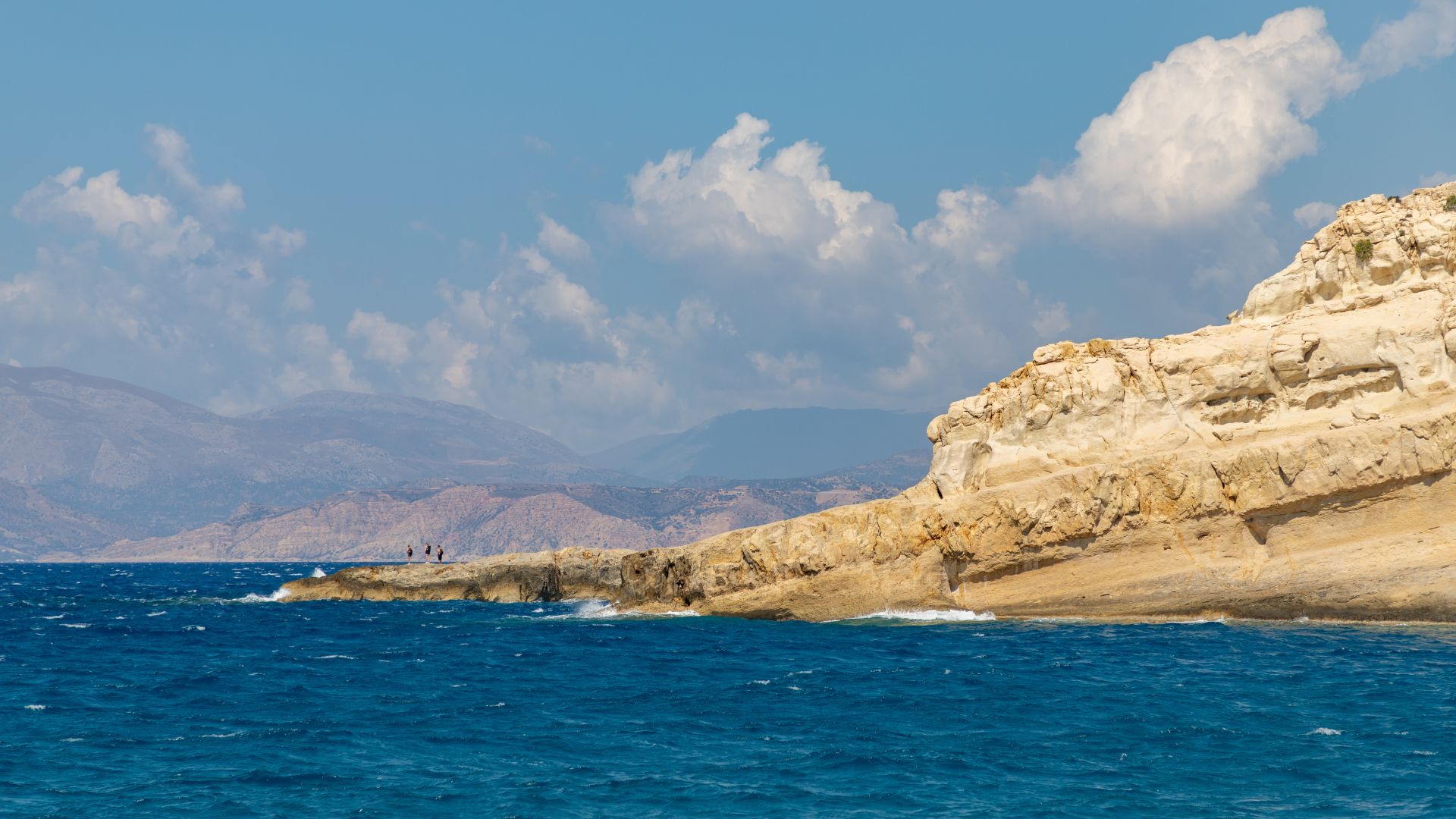
Why Matala Became a Hippie Haven
People carved Matala’s caves into the soft cliffs ages ago. Ancient Romans used them, then locals, and eventually, a wave of free-spirited travelers moved in.
In the late 1960s and early 1970s, hippies from all over the world flocked here. The caves gave them free shelter, and the beach offered endless sunshine.
Back then, young people from Europe and even further came searching for a simple, peaceful life close to nature. Music, art, and talk of freedom filled the air.
Joni Mitchell and other artists spent time here, and their influence lingers.
The big hippie crowds have moved on, but Matala still throws a summer festival every year to celebrate those days. The cave-dwellings, murals, and relaxed lifestyle all keep the bohemian spirit alive—and keep drawing dreamers and wanderers.
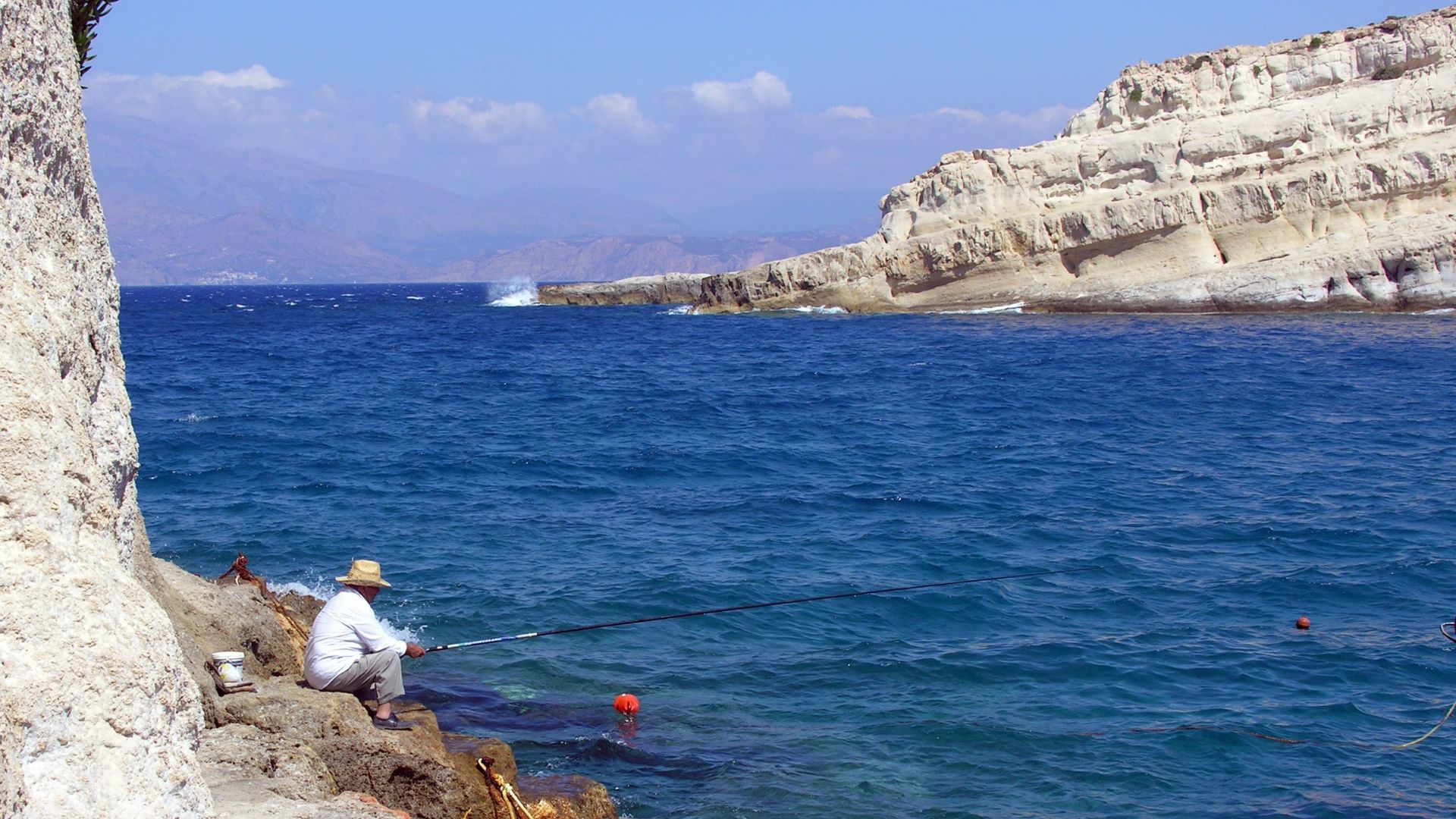
Inside Matala’s Mysterious Caves
When I got to Matala, I finally stood face to face with the caves carved deep into those soft cliffs. History shaped these spaces, and people gave them new life over the centuries.
These caves have sheltered everyone from ancient settlers to 1960s hippies. They still pull in curious travelers every year.
Origins of the Famous Sandstone Caves
Matala’s caves sit in white-yellow sandstone cliffs, right above the sea. Locals told me people first carved them out thousands of years ago. Most historians agree they go back to the Neolithic Age.
Later, Romans expanded the caves and sometimes used them as tombs. Some carvings go deep into the rock, making small chambers and tight passageways.
The soft stone is easy to shape, so the caves look smooth compared to the rugged cliffs nearby. Most visitors seem surprised to learn these caves aren’t natural—they’re handmade, and every mark tells a story.
As I wandered through the entrances, I kept thinking about the ancient people who sought shelter here. Signs pointed out which caves probably had special uses, like worship or burial.
It felt like a world apart from modern Crete—a place shaped by sweat, stone tools, and centuries of time.
Exploring Cave Life Then and Now
Stepping into the cool shadows, I tried to picture life here. In the ’60s and ’70s, Matala became famous for its hippie community. People traveled from all over Europe and North America just to stay in these caves.
They painted, sang, and built a small, peaceful community in these ancient shelters. Some locals I met remembered those days—the music echoing off cave walls, makeshift kitchens, and the sense that anything was possible.
Some caves connect by hidden pathways, so neighbors could drop by easily. At night, everyone gathered around campfires on the sand.
Now, nobody’s allowed to sleep overnight in the caves. But during the day, I saw travelers from everywhere exploring, snapping photos, and dreaming up their own adventures.
Graffiti from decades ago still lingers on some cave walls, mixed with ancient carvings—a visual timeline that’s hard to ignore.
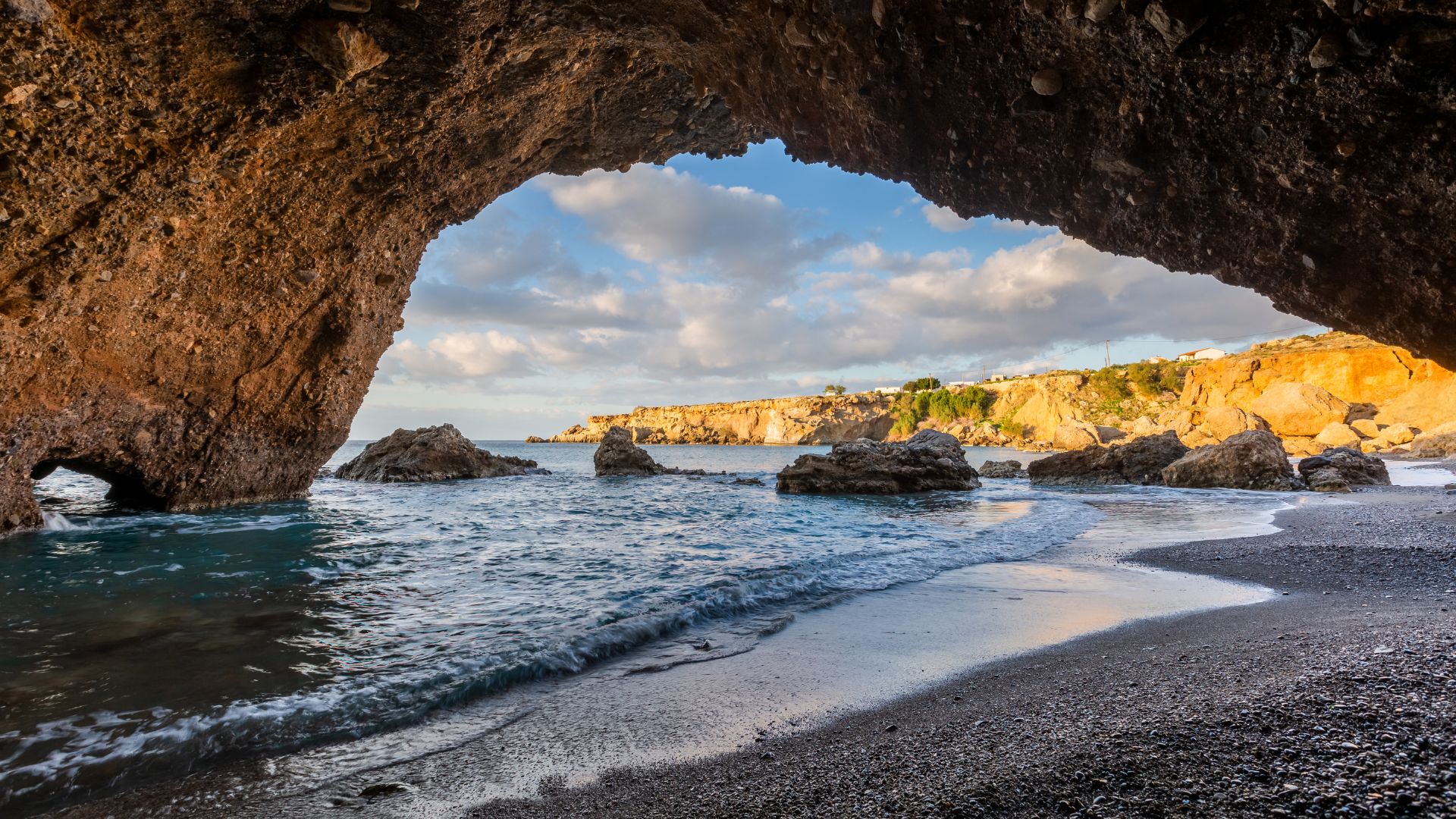
The Legends and Lore of the Caves
People like me keep coming back to Matala because these caves just have this air of mystery. Stories float around about pirates hiding treasure in them.
Other legends mention famous visitors—folk singer Joni Mitchell supposedly lived here for a while and drew inspiration from cave life for her music.
Locals love sharing these tales. Some sound true, others are definitely stretched. I heard about secret passages and ancient rituals. A few even claim the caves are haunted, though I never saw anything weird myself.
The mix of myth, music, and memory makes Matala stick in your mind. Even in the blazing sun, the cave entrances seem to guard their secrets. If you’re craving adventure or just fascinated by history, these stories make exploring Matala’s caves feel like stepping into another world.
Matala’s Hippie History: The Groovy 1960s & 70s
Matala looks like a quiet beach town now, but its caves once buzzed with artists, musicians, and travelers from all over. The peaceful vibe, wild landscapes, and rich history make this place so unique.
The Arrival of Peace, Love & Free Spirits
When the late 1960s rolled around, Matala’s carved rock caves became a home for hippies from everywhere. They searched for freedom, connection, and a new way to live.
Most of these wanderers brought almost nothing. They slept in the ancient caves above the red-sand beach, woke up to waves, and often relied on the kindness of locals or each other for food.
Word about Matala spread fast along the legendary Hippie Trail. Travelers from Europe and beyond flocked here, bringing new ideas and traditions.
The caves felt like a secret meeting spot—a kind of international village where nobody cared about your background. A short walk up the rocky hills, and I could almost hear the music and laughter echoing from the past.
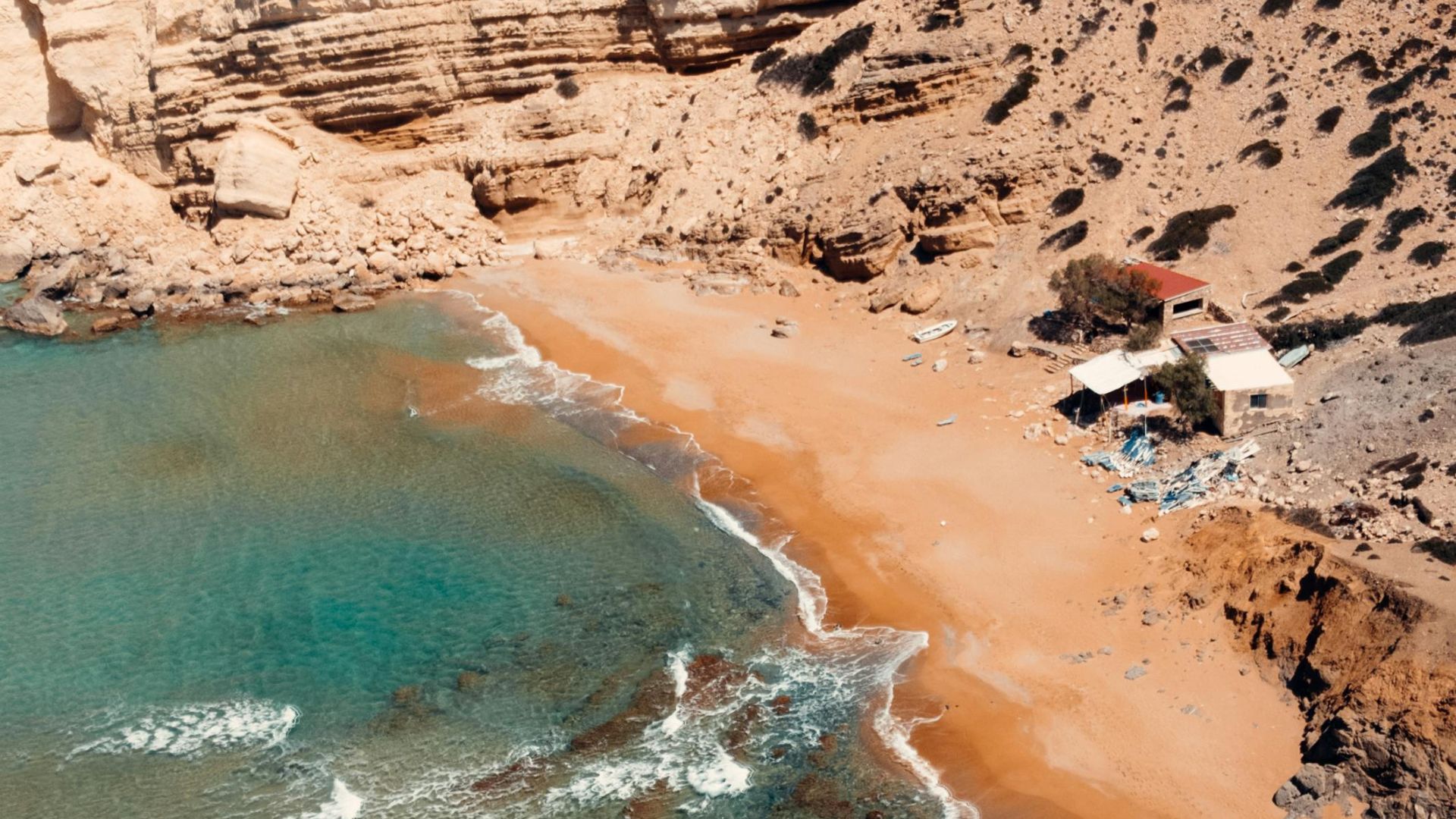
Music, Art, and the Counterculture
The caves weren’t just for sleeping. People turned them into small studios for art, music, and daydreaming.
They painted the walls with colorful flowers, suns, and peace signs. Guitars, bongos, and singing filled the air all summer long.
Joni Mitchell, the famous singer-songwriter, even lived here for a while. She wrote about Matala in her music after falling in love with the place’s relaxed freedom.
Every day mixed art with simple pleasures—swimming, sketching, writing poetry, or sharing bread under the stars.
I stumbled across old stories about how these creative souls traded skills and shared ideas right on the sand. For many, Matala was more than a beach—it was a chance to belong to a community built on peace and expression.
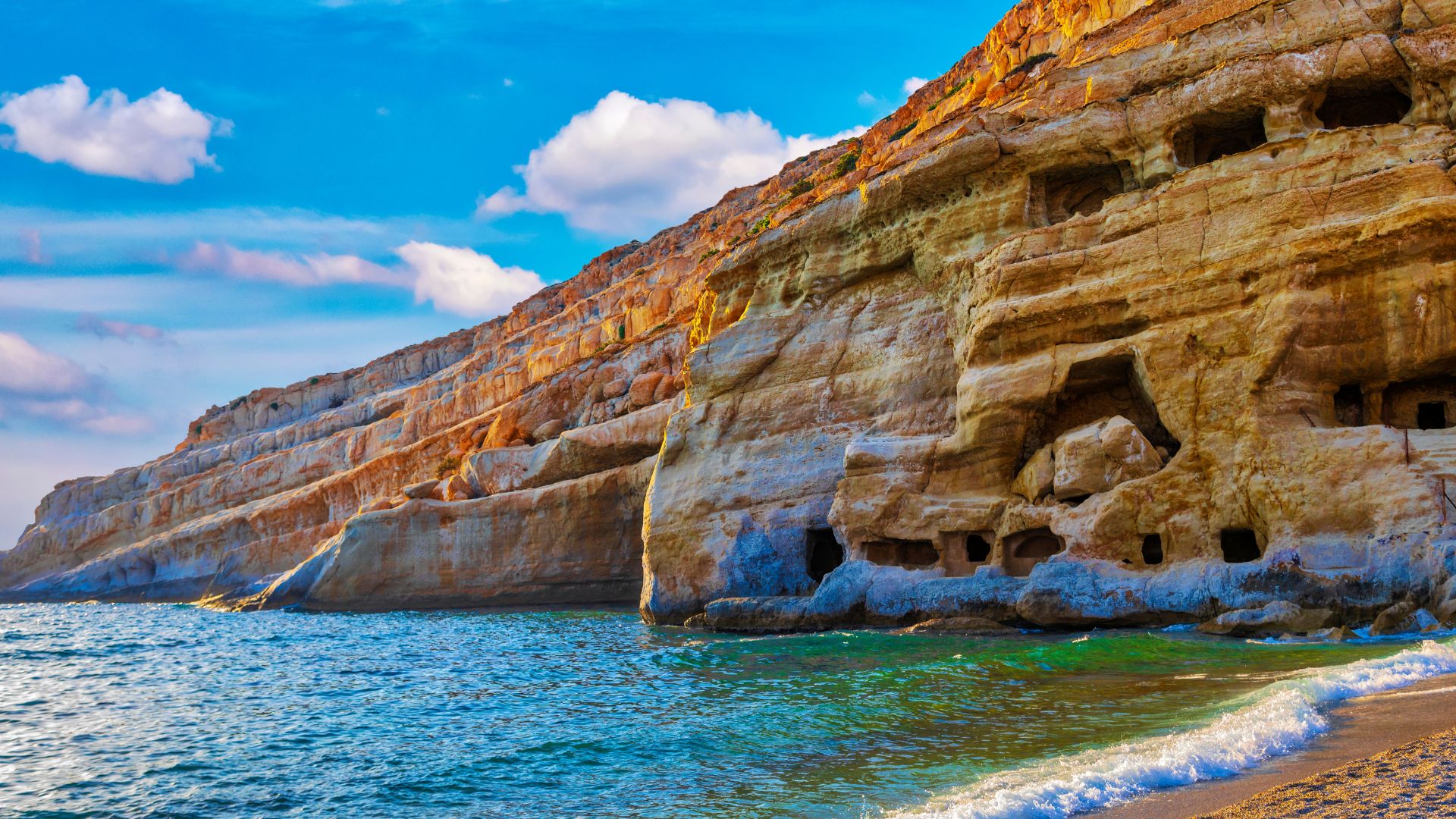
Modern Festivals and Cultural Events
Matala still remembers its hippie past. The caves are protected now, but every summer the Matala Beach Festival brings those groovy decades back to life.
Live music, art, and street performers take over the shore. Bands pay tribute to the sounds of the ’60s and ’70s, and crowds dance barefoot in the sand.
It’s open to everyone and draws visitors from all over. There’s a marketplace selling crafts, handmade jewelry, and local food—so there’s always something unique to bring home.
If you visit during festival season, you’ll feel Matala’s history come alive again, blending old hippie vibes with today’s friendly energy.
A Red Sand Retreat: Experiencing Matala Beach Today
Matala Beach isn’t just about its famous caves and wild history—it’s a spot where ancient stories meet a jaw-dropping shoreline.
My time here mixed exploring unique cliffs, relaxing on bright sands, and soaking up that easygoing energy that’s somehow still buzzing.
Must-See Spots on the Shore
The row of man-made caves carved into the steep cliff along Matala’s west side blew me away. I climbed up for a closer look. Some caves go deep, and others open like rooms above the sparkling blue water.
Exploring them felt like stepping straight into Matala’s hippie past.
Not far from the main beach, I found a painted street full of flower murals and peace signs—reminders of the 1970s everywhere. I wandered among little shops selling tie-dye shirts and local crafts, with Bob Dylan drifting from an open café window.
A visit isn’t really complete without the short walk to Red Sand Beach (Kokkini Ammos). After a 30-minute hike over rocky trails, I reached the wild, reddish sand—a quieter spot, still close enough to Matala to catch the vibe, but with way fewer people.
| Spot | What Makes It Special |
|---|---|
| Caves | History + ocean views |
| Painted streets | Hippie murals + shops |
| Red Sand Beach | Unique color + privacy |
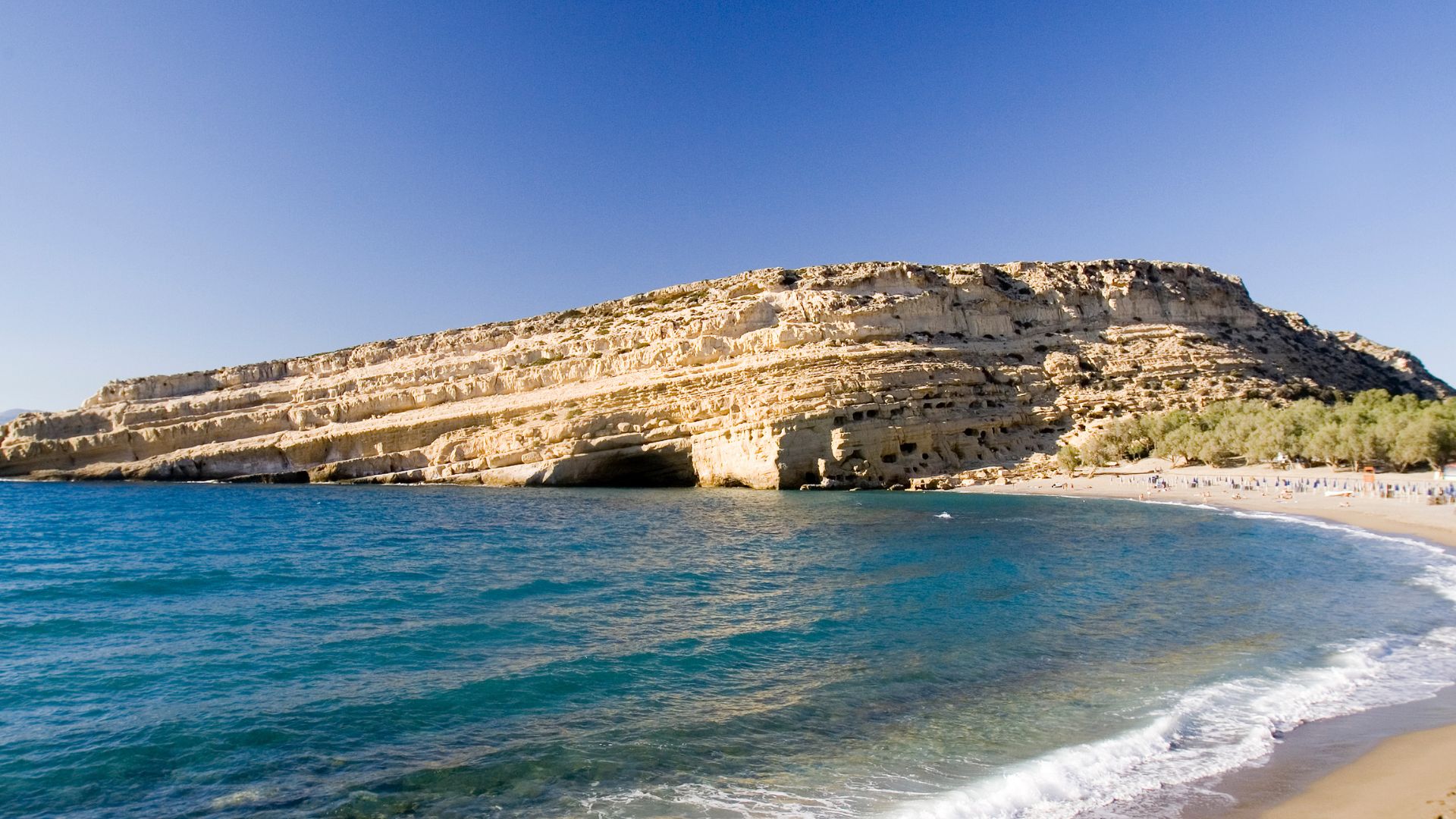
Swimming, Sunsets, and Seaside Cafés
The water in Matala is crystal clear and warms up by late spring. I swam every morning while fishing boats bobbed nearby.
If you like snorkeling, the rocky areas near the cliffs reveal colorful fish and sea urchins.
By afternoon, the beach buzzed with sunbathers, frisbee tossers, and sandcastle builders. When it got too hot, I’d duck into a beachfront café for something cold.
Local spots serve Greek salad, fresh seafood, and homemade pastries.
Nothing really compares to a Matala sunset. Every evening, crowds gathered along the shoreline to watch the sun drop behind the sandstone cliffs.
Golden light would hit the water and old caves, turning the bay a deep orange. Evenings usually ended with soft music from an acoustic guitar drifting from a nearby taverna.
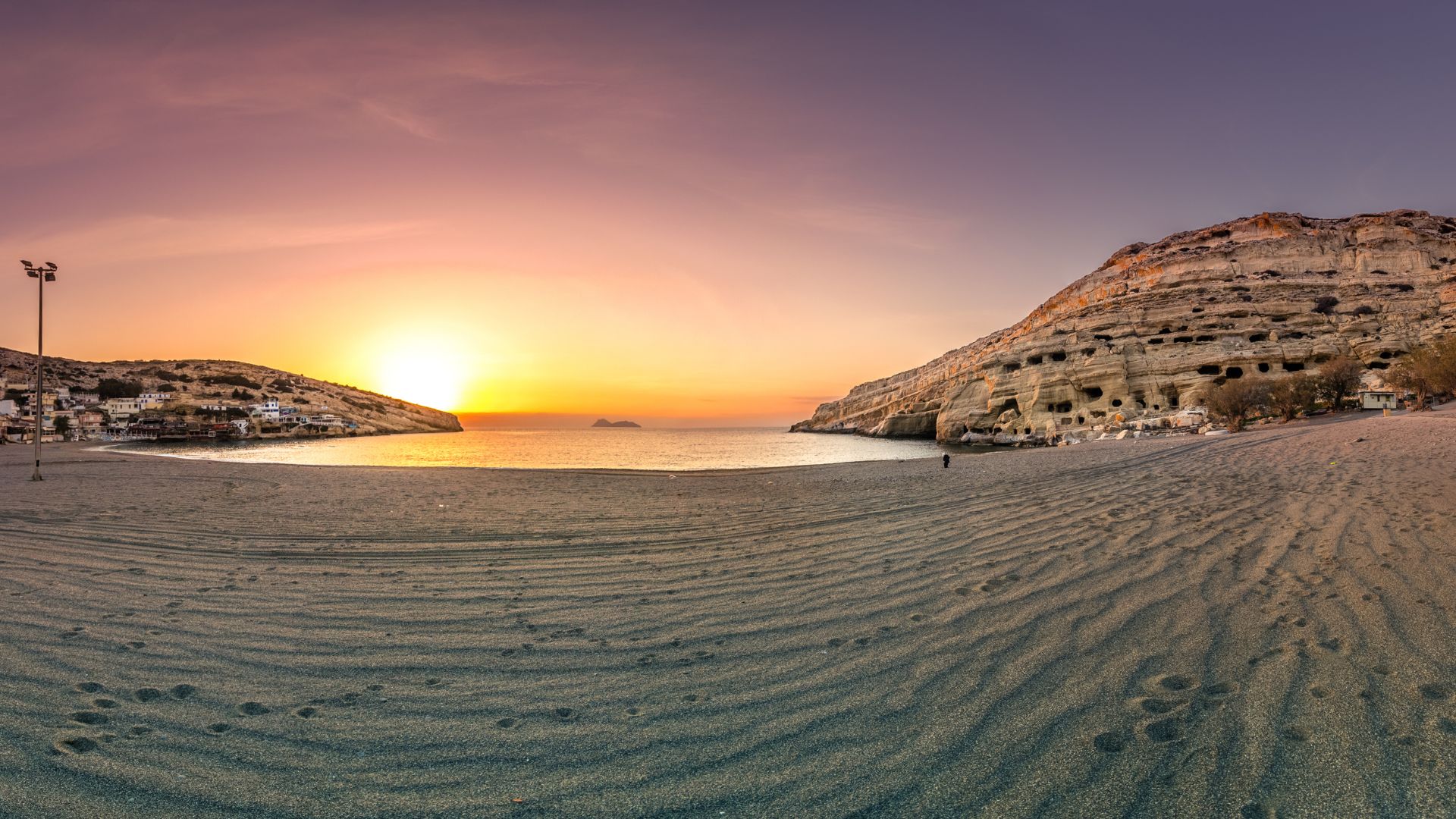
Practical Tips for a Legendary Matala Escape
I found that planning ahead makes every beach day and cave visit way smoother. Here’s what helped me get the most out of my hippie-inspired adventure, from getting to Matala to packing for the red-sand beaches.
Getting to Matala and Where to Stay
I drove from Heraklion and got to Matala in just under 90 minutes. Buses leave several times a day from Heraklion, and while the ride takes a bit longer, it’s affordable and means you don’t have to deal with winding mountain roads.
Parking is free in the off-season, but it fills up fast in summer, so getting there early is smart.
For places to stay, Matala keeps it chill. I found family-run guesthouses and budget rooms near the beach, and a few eco-friendly boutique hotels for a little more comfort.
Camping is popular too—the main campground sits just steps from the sand and has a relaxed, friendly vibe.
Popular dinner spots like Taverna “Sunset” and Georges Yard come up in lots of travel articles. Most accommodations are close to restaurants and shops.
If you’re coming during high season, book ahead. I almost missed out by waiting too long.
What to Pack for Your Adventure
Visiting Matala’s caves and that incredible red sand? You’ll want more than just a swimsuit, trust me.
I stayed cool with lightweight, breathable clothes. Sturdy sandals or water shoes really saved my feet—those rocky paths up to the caves can be brutal if you go barefoot.
I always tossed a refillable water bottle in my bag. That sun doesn’t mess around. Reef-safe sunscreen and a decent pair of sunglasses made a huge difference; the sand reflects light everywhere.
A small backpack worked for my snacks, towel, and a quick change after swimming in the ocean.
If you’re into music, bring a tiny portable speaker. It’s perfect for a sunset beach vibe.
Planning to hike? Grab a hat and some insect repellent—those olive groves get buggy when the sun goes down.
Oh, and don’t forget some cash. A few tavernas still don’t take cards, which can be a surprise.
